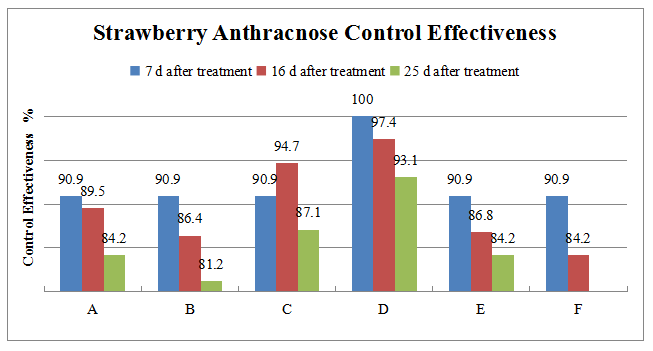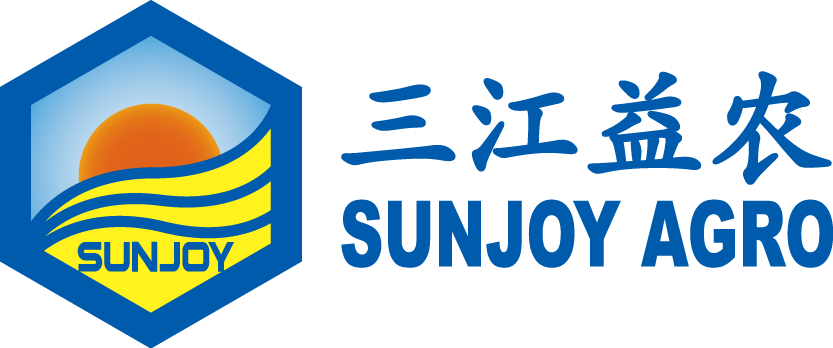Case Studies
We provide plant protection and plant nutrition products that help build healthy and sustainable food systems.
Disease Control in Strawberry Anthracnose
Strawberry anthracnose occurs all over the world, often resulting in a 25-30% reduction in production, seriously affecting the yield and quality of strawberries.
Fungicide
Strawberry anthracnose occurs all over the world, often resulting in a 25-30% reduction in production, seriously affecting the yield and quality of strawberries. There are differences in the types of pathogens in different regions, mainly by Colletotrichum gloeosporioides, Colletotrichum fragariae, or Colletotrichum acutatum. Hot and humid weather is more favorable for disease prevalence. Continuous cropping without thorough disinfection is another cause of disease incidence.
The symptoms of strawberry anthracnose include leaf spots and plant wilting. When strawberry plants are infected with anthracnose, spindle-shaped and elliptic lesions with a diameter of 3-7 mm are formed. The lesions then develop into reddish-brown or black spots. As the spots expand into rings, the upper parts wilt and die. When humidity increases, red spores grow on the lesions. In the early stage of the disease, strawberry plants wither at noon and recover in the morning and at night. As the disease progresses, the plants appear dead and never recover.
Sunjoy Recommendations
To prevent strawberry anthracnose, it is important to strengthen overall field management, such as controlling the use of nitrogen fertilizer, protecting seedlings from rain, and quickly removing the source of the disease. In addition, strawberry anthracnose can be prevented by chemical treatment. Before the disease occurs, protective fungicides can be used to prevent and control the disease in sequence, with an interval of 7-10 days. If anthracnose occurs on strawberry plants, Sunjoy Agro recommends the use of Dithianon 300g/L + Pyraclostrobin 100g/L SC and 10% Difenoconazole DF for foliar spray.
Dithianon 300g/L + Pyraclostrobin 100g/L SC: Dithianon inhibits a series of fungal enzymes by reacting with sulfur-containing groups and interfering with cellular respiration. Pyraclostrobin inhibits mitochondrial respiration by preventing electron transfer between cytochrome B and C1. Therefore, resistance is not easily generated due to different modes of action. In addition, the formulated product has many other advantages, including improving leaf gloss and fruit quality, quick effect, long duration, and resistance to rain erosion.
10% Difenoconazole DF: Difenoconazole has strong systemic properties and root-tip conduction activity. It can be absorbed and stabilized in crops a few hours after application. Difenoconazole has a broad control spectrum on Ascomycetes, Basidiomycetes, etc. Fungal growth can be prevented by inhibiting the biosynthesis of sterols in cell membranes. As a result, Difenoconazole has a long-lasting effect regarding disease prevention, treatment and eradication.
Performance Results
1. Test purpose
The purpose of this study is to understand the application rate in the field and verify the control effect of Dithianon 300g/L + Pyraclostrobin 100g/L SC on strawberry anthracnose.
2. Fungicide and Experiment
|
NO. |
Fungicide |
Active Ingredient Amount(g/HA) |
|
A |
40% Pyraclostrobin•Dithianon SC |
900 g/HA |
|
B |
40% Pyraclostrobin•Dithianon SC |
600 g/HA |
|
C |
40% Pyraclostrobin•Dithianon SC+Biostimulant |
600 g/HA |
|
D |
40% Pyraclostrobin•Dithianon SC + 10% Difenoconazole DF |
600 g/HA + 150 g/HA |
|
E |
16% Pyraclostrobin•Dithianon WG |
480 g/HA |
|
F |
20% Pyraclostrobin•Dithianon SC |
600 g/HA |
3. Results

The test field is located in Jiande City, Zhejiang Province. The test variety is the “Hong Jia” strawberry. Researchers choose 3 blocks for each experiment group. Each block has 100 strawberry seedlings, 300 seedlings in total. The applications were carried out on 6/8/2021, 6/15/2021 and 6/24/2021. The observations of control effectiveness were carried out on 6/15/2021(7 days after the first treatment), 6/24/2021(16 days after the first treatment), and 7/2/2021 (25 days after the first treatment).
Performance assessments are based on results and analysis of Jiande City Agricultural Technology Extension Center evaluations.
4. Conclusion
Dithianon 300g/L + Pyraclostrobin 100g/L SC or Dithianon 300g/L + Pyraclostrobin 100g/L SC +10% Difenoconazole DF have a strong effect on strawberry seedlings. In Group A, B, and C, Dithianon 300g/L + Pyraclostrobin 100g/L SC was used three times in a row in the initial stage of strawberry anthracnose, and the control effect of 25 days after treatment was more than 80%. In Group D, the control effect of Dithianon 300g/L + Pyraclostrobin 100g/L SC 1500 times +10% Difenoconazole DF was more obvious, reaching 93.1%.
Explore More

